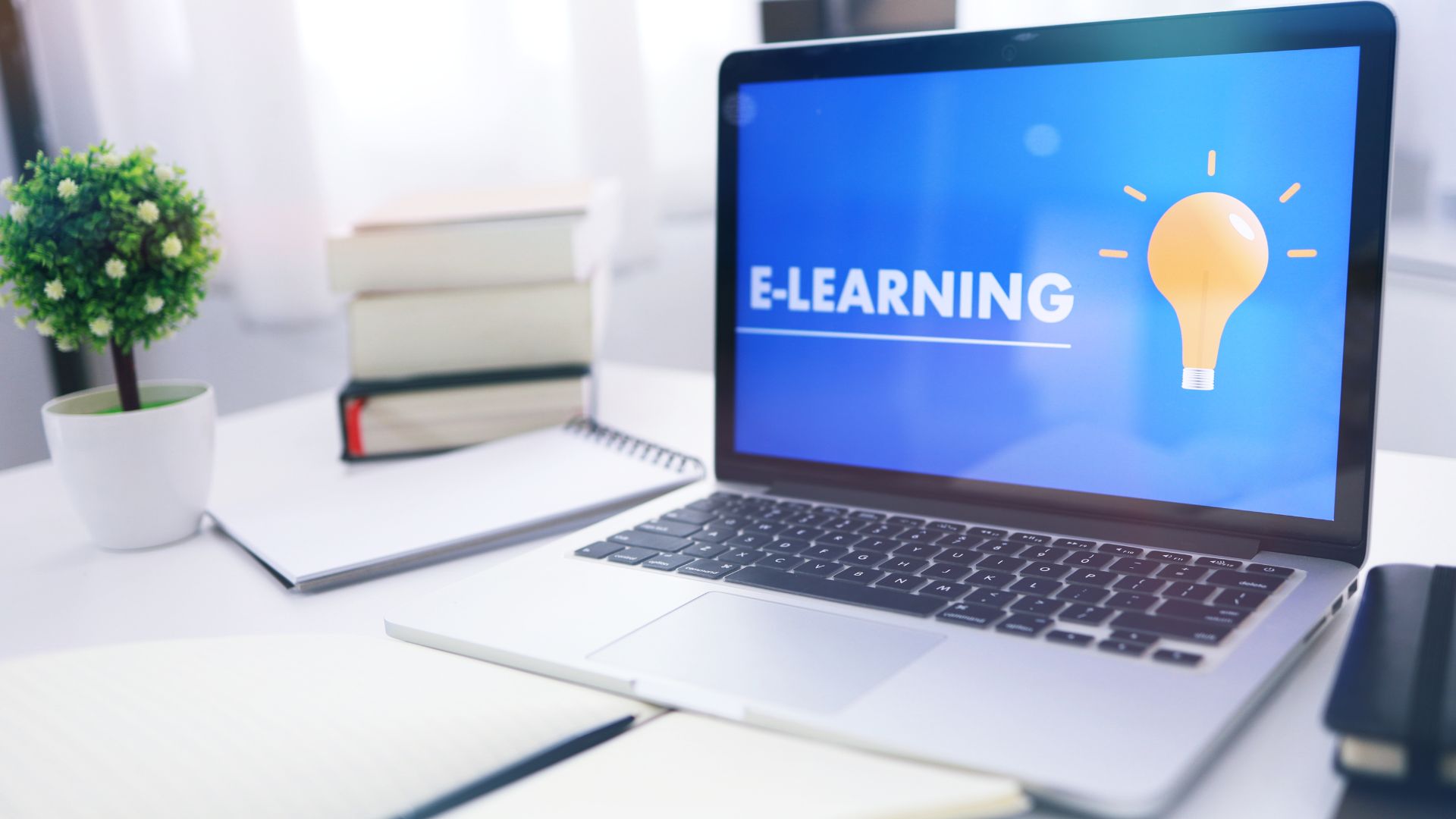The Real-World Impact of E-learning in Education
E-learning has steadily reshaped the fabric of education, offering flexibility, accessibility, and a dynamic learning environment unlike anything traditional classrooms can fully replicate. For educators, institutions, and learners alike, understanding how to navigate, implement, and evolve with online learning isn’t just helpful; it’s essential.
But here’s the tricky part: it’s not just about digitising lessons. To succeed with e-learning in education, we must build the right infrastructure, mindset, and methodology to make it truly effective.
Understanding the Benefits of E-learning
Let’s start with what works. The benefits of e-learning extend far beyond convenience. At its best, it removes barriers to access and transforms educational delivery into something far more flexible and inclusive.
- Accessibility from anywhere: Students can engage with course material from any location, enabling rural and remote learners to access quality education.
- Personalised pace: Self-paced options empower learners to revisit materials and learn when they’re most focused.
- Scalable teaching methods: Educators can reach more students without compromising on quality, supported by tools like learning management systems.
- Cost-effective: Institutions reduce infrastructure costs while maintaining a rich learning experience.
One real-world example: Universiti Kuala Lumpur (UniKL) partnered with Pukunui Sdn Bhd to scale a learning management platform powered by Moodle™ software, enabling thousands of students to continue learning seamlessly during school closures.
Challenges You Can’t Ignore with E-learning
Of course, it’s not all smooth sailing. Anyone who has ever tried to join a video call on a shaky connection knows that the disadvantages of e-learning can be frustrating and even exclusionary.
Key Disadvantages to Address
- Digital divide: Not all students have the devices or bandwidth to fully participate in online learning.
- Motivation deficit: Without consistent guidance, some learners struggle with time management or disengage entirely.
- Pedagogical gaps: Not all content translates smoothly from a classroom to an online format. Interactivity and engagement design are crucial.
This means that beyond tech upgrades, we must rethink the entire learning strategy. Providing laptops isn’t enough; we need to design learning opportunities that keep students involved and supported.
Types of E-learning Environments
There are multiple modalities within e-learning in education, each suited for different teaching goals. Matching your goals with the right model is critical.
| Type | Description | Best For |
|---|---|---|
| Synchronous | Real-time, instructor-led virtual classes via tools like Zoom™ or Microsoft Teams® | Course materials are accessed at any time through forums, recorded lectures, or assignments |
| Asynchronous | Course materials accessed at any time through forums, recorded lectures, or assignments | Self-paced learning and flexibility |
| Blended | A mix of in-person and online content | Combining social interaction with flexibility |
Effective E-learning Starts with the Platform
Choosing the right e-learning platform is like hiring a teacher you’ll never meet in person. It has to be reliable, intuitive, and capable of delivering diverse content.
Platforms built on Moodle™ software remain a top choice globally—and for good reason. They’re modular, scalable, and ensure each learner experiences high-quality, secure, and customisable learning environments.
Must-Have Features to Look For
- Mobile-friendly interface
- Easy content and assessment management
- Robust data tracking and reporting tools
- Support for multimedia and collaborative tools
Bonus tip: Integrate your platform with your student information system to automate enrolments and assessments. Your admin team will thank you.
Strategies to Improve Digital Equity
Without equality in access, the promise of e-learning falls short of its potential. Institutions must consider both technical and contextual support to bridge the gap.
Try these steps:
- Provide subsidised or loan-to-own devices for students with limited means
- Support offline access by enabling downloadable course materials
- Partner with telecom providers for free or discounted data plans
- Train teachers on inclusive digital teaching methodologies
Another case: In Penang, a group of vernacular schools received donated tablets to assist needy pupils in their online learning. While not explicitly solar-charged tablets, this signals how technology distribution is bridging access gaps in the state
Shifting the Pedagogy: From Passive to Dynamic
Simply uploading slides isn’t enough. A truly dynamic learning model engages students and keeps them curious.
Build Engagement with These Ideas:
- Incorporate scenario-based quizzes and decision trees
- Use peer discussion forums for reflection and knowledge-sharing
- Add gamification elements to create positive stress — yes, that’s a thing
- Rotate media types: mix videos, readings, podcasts, and polls
Building Learner-Centred Methodologies
At the heart of every thriving online learning experience is one thing: the learner. Everything else is scaffolding.
Effective learning methods respect different learning styles, encourage intrinsic motivation, and provide prompt feedback. Combine peer assessment tools, mentorship channels, and live feedback loops to support deeper understanding. Otherwise, we risk replicating the worst parts of the traditional classroom — only this time, on Wi-Fi.
Collaborating for Long-Term Impact
Organisations, NGOs, and universities can pool resources to create accessible, scalable learning opportunities. The collaboration between EdTech startups and local governments in Southeast Asia has helped thousands of students access platforms using Moodle™ software with region-appropriate content.
Tip: Before starting any project, map your user personas. Understanding real students to access the system helps guide design decisions better than assumptions made in boardrooms.
Support Doesn’t End After Login
Even the most powerful learning management systems won’t deliver great results if users don’t feel supported. Continuous tech support, academic coaching, and professional development for teachers are essential.
What to Include in Your Support Framework:
- 24/7 helpdesk or support ticket system
- Onboarding guides and video tutorials
- Regular feedback loops from users
- Scheduled training sessions for educators onboarding new tech
A failed login can make or break a learning experience, especially during critical exam prep. It’s not dramatic if it’s true.
FAQs About E-learning in Education
What is e-learning in education?
E-learning in education refers to delivering educational content and instruction via digital platforms. It involves using computers, tablets, or mobile devices, often through learning management systems, to enable flexible and remote learning experiences.
What is an example of e-learning?
An example of e-learning would be a university offering an online business course through a Moodle™ software platform. Students log in, view video lectures, take quizzes, and submit assignments from anywhere using an internet connection.
What are the three main types of e-learning?
The three main types of e-learning are:
- Synchronous learning – real-time, live sessions
- Asynchronous learning – self-paced access to materials
- Blended learning – a combination of online and face-to-face instruction
How important is e-learning?
Very. E-learning makes education more accessible, enables personalised instruction, and supports lifelong learning for both students and professionals. It allows education to adapt to the needs of diverse learners and changing global challenges.
Your Next Step Toward Effective Online Learning
E-learning in education isn’t optional anymore; it’s foundational. But getting it right takes more than technology. It requires thoughtful methodology, inclusive design, and a partnership mindset. Whether you’re deploying a full-fledged Moodle™-based learning environment or refining your online learning strategy, success only happens when learners are kept at the centre. To achieve true engagement, it’s essential to foster an interactive community where feedback flows freely between instructors and students. Utilizing tools like Moodle for online learning success can enhance collaboration and ensure that resources are accessible to all. Ultimately, prioritizing the learner’s experience will lead to more effective outcomes and a thriving educational atmosphere.
Need help implementing a successful e-learning framework? At Pukunui Sdn Bhd, we partner with institutions across Malaysia to strengthen their digital education ecosystems. Contact us to schedule a personalised consultation or explore our Moodle™ software implementations to see what’s possible.

